5 Essential Oils for PMS and Menstrual Cramps
Imagine finding natural relief from painful menstrual cramps and PMS symptoms without resorting to over-the-counter medication. 5 essential oils for PMS and menstrual cramps, derived from plants, have been used for centuries to address various health issues, including menstrual discomfort. In this blog post, we’ll explore the power of these essential oils and how they can provide relief from PMS and menstrual cramps, as well as the importance of aromatherapy in women’s health. Get ready to discover nature’s remedies for menstrual pain relief and learn about alternative treatments that can help you regain control over your menstrual cycle.
Key Takeaways
- Essential oils have been used for centuries to provide relief from PMS and menstrual cramps.
- Aromatherapy has been proven to be an effective treatment, with the top 5 essential oils being lavender, clary sage, peppermint, cinnamon and chamomile.
- Alternative treatments such as heat therapy, gentle exercise and dietary changes can also help reduce pain associated with primary dysmenorrhea.
The Power of Essential Oils for PMS and Menstrual Cramp Relief

Essential oils have long been used to provide relief from PMS and menstrual cramps. The therapeutic benefits of these natural remedies have been embraced by women worldwide, who have turned to aromatherapy for support during their menstrual cycles. In fact, essential oils such as:
- lavender
- clary sage
- peppermint
- cinnamon
- Roman chamomile
Dealing with painful menstrual cramps can be challenging, but certain methods are among the most effective in alleviating menstrual pain and discomfort.
The practice of aromatherapy, a holistic healing treatment that utilizes natural plant extracts, has played a significant role in women’s health. Understanding the science behind essential oils and their pain-relieving properties allows us to recognize their potential for providing relief from menstrual cramps and PMS symptoms. We will now further examine the role of aromatherapy and the science behind essential oils.
The Role of Aromatherapy in Women’s Health
Aromatherapy has been used for centuries to address various health concerns, including menstrual discomfort. Essential oils, the foundation of aromatherapy, are plant-based oils that have been employed to treat various conditions and ailments, providing numerous advantages for women’s health. For instance, clary sage essential oil is a natural analgesic that can alleviate stomach distress and menstrual cramping.
Research has demonstrated the efficacy of aromatherapy in women’s health, particularly in enhancing mood, sexual function, and managing symptoms in cancer patients. Massage essential oils, such as:
- lavender
- bergamot
- bitter orange
- neroli
have been studied in this context, revealing the potential of aromatherapy as a nontraditional treatment for menstrual cramps and other women’s health issues.
Understanding the Science Behind Essential Oils
The use of essential oils as a means of providing pain relief is based on olfactory stimulation and aromatherapy. Certain essential oils contain compounds that can help alleviate pain, inflammation, and hormonal imbalances during menstruation. Research has indicated that inhaling specific essential oils can lead to an immediate decrease in pain, and the combination of certain oils can increase their capacity to provide relief.
Clary sage, lavender, bergamot, Roman chamomile, cedarwood, ylang-ylang, geranium, fennel, carrot seed, palmarosa, vitex, cinnamon, clove, rose, and ginger oil are some of the compounds present in essential oils that may provide relief from menstrual cramps. Furthermore, essential oils can act as agonists to the estrogen receptor alpha (ERα) and antagonists to the androgen receptor (AR), which may help in maintaining hormone levels. However, more research is necessary to gain a comprehensive understanding of the science behind the effects of essential oils on hormonal balance.
Top 5 Essential Oils for PMS and Menstrual Cramps
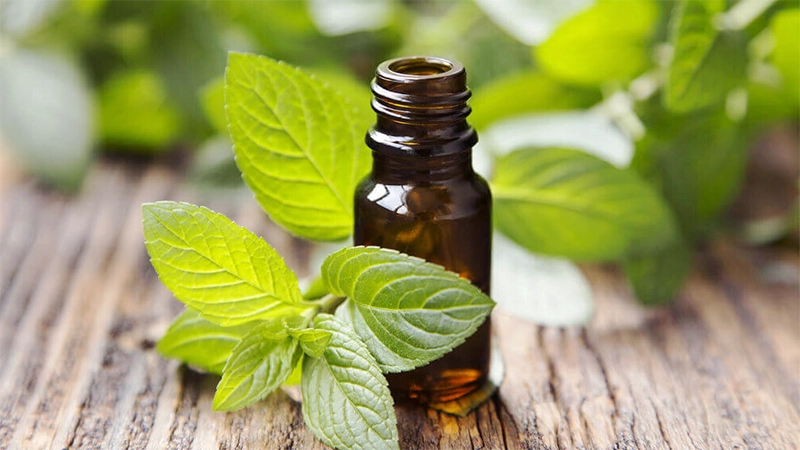
Having discussed the benefits of essential oils and the role of aromatherapy in women’s health, we will now examine the top 5 essential oils known to ease PMS and menstrual cramps. These oils include:
- Soothing lavender
- Hormone-balancing clary sage
- Cooling peppermint
- Anti-inflammatory cinnamon
- Calming Roman chamomile
Whether you choose to use these oils individually or in combination, they hold great potential in providing relief from menstrual pain and discomfort.
The following subsections will detail each of these essential oils, highlighting their unique properties and benefits for menstrual cramps and PMS symptoms. Understanding the workings of these oils and their safe usage can help utilize their potential for relief during menstruation.
Soothing Lavender Oil
Lavender essential oil, also known as lavender oil, is well-known for its soothing properties and its ability to relax muscles and reduce inflammation during menstruation. The compounds in lavender oil responsible for its soothing qualities are:
- Cineole
- Fenchol
- Camphor
- Linalool acetate
Applying lavender oil to your abdominal area can help alleviate menstrual pain and discomfort.
Several scientific studies have been conducted that demonstrate the potential of lavender oil for relieving menstrual cramps. One study found that lavender oil had a marked impact in reducing pain severity in comparison to other essential oils. Moreover, another study suggested that the use of lavender oil as an aromatherapy massage oil could significantly reduce pain and discomfort associated with menstrual cramps.
To use lavender oil for menstrual cramp relief, it is recommended to dilute it with a carrier oil, such as coconut or olive oil, and massage it onto the stomach.
Clary Sage: Hormone Balancer and Pain Reliever
Clary sage oil is another essential oil with significant benefits for menstrual cramps and PMS symptoms. Its ability to balance hormones and relieve pain during menstruation makes it a popular choice for women seeking natural relief. Clary sage essential oil can facilitate hormonal balance by decreasing cortisol levels and replicating estrogen, thereby sustaining a sound hormonal cycle.
The pain-relieving capabilities of clary sage oil are believed to be due to its capacity to relax muscles and reduce inflammation. Research has demonstrated that clary sage oil, when included in an abdominal massage, was more successful in reducing menstrual pain compared to paracetamol.
To use clary sage oil for menstrual cramp relief, dilute it in a carrier oil and massage it onto the abdomen, or add a few drops to a diffuser for inhalation.
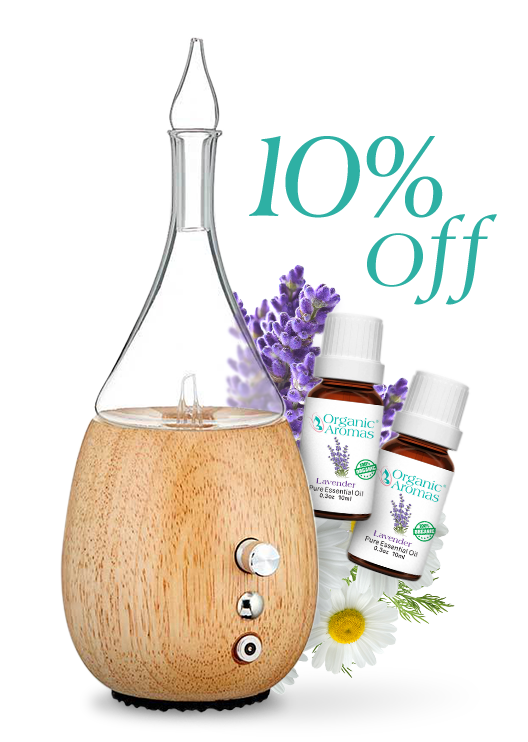
Join Now and Get a Coupon for 10% Off!
Cooling Peppermint Oil
Peppermint essential oil provides a cooling effect, helping to alleviate headaches, inflammation, and fatigue during periods. The active compound in peppermint oil that aids in relieving menstrual symptoms is menthol, which has a cooling effect that can reduce the duration and severity of menstrual cramps.
The cooling effect of peppermint oil, containing menthol, can aid in reducing pain and inflammation during menstruation. Research has indicated that peppermint oil has anti-inflammatory properties, which can help relax stomach muscles and lessen discomfort. To use peppermint oil for menstrual cramp relief, dilute it with a carrier oil and massage it onto the abdomen, or add a few drops to a diffuser for inhalation.
Cinnamon Oil: Anti-Inflammatory and Pain Reducer
Cinnamon oil is another essential oil known for its anti-inflammatory properties and ability to help reduce pain and uterine contractions during menstruation. The chemical components of cinnamon oil that are responsible for its anti-inflammatory properties are cinnamon aldehyde, cinnamic alcohol, cinnamic acid, and o-methoxycinnamaldehyde.
Cinnamon oil’s effect on prostaglandin production is believed to play a role in reducing menstrual cramps by causing uterine muscles to contract. To use cinnamon oil for menstrual cramp relief, dilute it with a carrier oil and massage it onto the abdomen, or add a few drops to a diffuser for inhalation.
Calming Roman Chamomile Oil
Roman chamomile oil is praised for its calming effect, helping to ease menstrual pain and anxiety. The active compounds in Roman chamomile oil that are known to have calming effects include flavonoids such as apigenin, luteolin, and quercetin, as well as volatile oils like alpha-bisabolol.
Roman chamomile oil interacts with the nervous system to:
- Reduce anxiety
- Alleviate menstrual pain
- Induce relaxation
- Calm the nerves
- Act as a mild sedative
- Diminish menstrual-related mood symptoms
To use Roman chamomile oil for menstrual pain relief, dilute it in a carrier oil and massage it onto the abdomen, or diffuse a few drops of the oil in water for a calming effect.

How to Use Essential Oils Safely for Menstrual Relief

Using essential oils safely for menstrual relief involves diluting them with carrier oils, selecting the right application method, and being aware of possible reactions. It’s important to dilute essential oils with carrier oils such as coconut, olive, or grapeseed oil to reduce the risk of skin irritation and other adverse reactions. Additionally, the application methods for essential oils include massage, inhalation, and adding them to baths.
It is also important to be cautious of possible reactions to essential oils and always perform a patch test before using them on larger areas of the skin. Some individuals may experience skin irritation, allergic reactions, or headaches when using essential oils, so it’s essential to monitor your body’s response and discontinue use if any adverse reactions occur.
Dilution and Carrier Oils
Dilution of essential oils with carrier oils is key to prevent skin irritation and ensure safe usage. Jojoba oil, coconut oil, and grapeseed oil are the most appropriate carrier oils for dilution. These oils not only aid in diluting essential oils, but also provide additional skin benefits such as moisturization and nourishment.
The importance of dilution in the utilization of essential oils cannot be overstated, as it helps to avert skin reactions and systemic toxicity. Dilution ensures that the oils are safe and gentle when applied to the skin, minimizing the risk of irritation and other potential side effects.
For menstrual cramp relief, it is recommended to dilute a few drops of the essential oil in a carrier oil, such as coconut or olive oil, and massage it onto the stomach.
Application Methods
There are various application methods for utilizing essential oils to alleviate menstrual pain and discomfort. Some effective methods include:
- Massage: This allows the essential oils to be absorbed through the skin directly to the affected area, providing targeted relief.
- Inhalation: This can be done by inhaling the oil directly or using a diffuser to disperse the oil particles in the air for inhalation.
- Bath: Adding a few drops of essential oil to bath water can provide a relaxing and soothing experience during menstruation.
Each application method has its advantages for menstrual cramp relief. For example, aromatherapy with rose essential oil can assist in reducing period pain, while using lavender oil as an aromatherapy massage oil can significantly reduce pain and discomfort associated with menstrual cramps. By choosing the appropriate application method, you can tailor your essential oil experience to your specific needs and preferences.
Precautions and Possible Reactions
When using essential oils for menstrual relief, it’s important to be aware of potential reactions and take precautions to ensure safe usage. Before applying essential oils to larger areas of the skin, always perform a patch test to check for any adverse reactions, such as skin irritation or allergies.
Common allergic reactions to essential oils used for menstrual relief may include:
- Contact dermatitis
- Hives
- Phototoxic reactions
- Nasal irritation
- Eye irritation
If you experience any adverse reactions, discontinue use immediately and consult your healthcare provider if symptoms persist or worsen.
Always follow the directions for use and dilution to minimize the risk of adverse reactions.
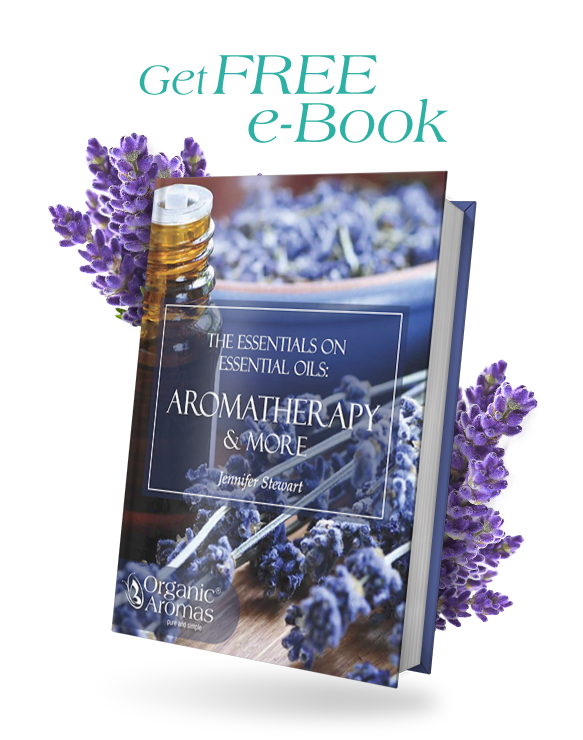
Sign Up to Get Your FREE
e-Book Here…
Alternative Treatments for Menstrual Cramps
Beyond essential oils, alternative treatments like heat therapy, gentle exercise, and dietary changes also prove effective in alleviating menstrual cramps and discomfort. Incorporating these alternative treatments into your menstrual care routine can provide additional relief and support during your period.
We will examine each of these alternative treatments in more detail, understanding their role in reducing menstrual pain and discomfort, and how they can be incorporated into a self-care routine.
Heat Therapy
Applying heat to the abdomen or lower back can help alleviate menstrual cramps by relaxing the muscles in the uterus, improving blood flow, and reducing inflammation. Heat therapy, such as using heating pads or warm compresses, has been shown to effectively decrease menstrual pain for women with primary dysmenorrhea.
The most efficacious methods of applying heat therapy for menstrual cramps include utilizing a heating pad on the lower abdomen, immersing oneself in a hot bath, and employing heating patches. When using heat therapy, be sure to follow the directions provided and exercise caution to prevent skin irritation or burns.
Gentle Exercise
Engaging in gentle exercise during menstruation can help alleviate menstrual cramps by releasing natural endorphins, which act as painkillers. Exercise also improves circulation and reduces muscle tension, providing relief from cramps. Some beneficial types of gentle exercise for menstrual pain relief include:
- Low-intensity walking
- Swimming
- Yoga
- Light cardio exercises
It is generally safe to exercise during your period, and doing so may even help reduce symptoms such as painful cramps. However, if you experience fatigue or discomfort during exercise, it may be sensible to reduce the intensity of your workout. Always listen to your body and adjust your exercise routine accordingly.
Dietary Changes
Adjusting your diet to include anti-inflammatory foods and reducing caffeine intake can help alleviate menstrual discomfort. Consuming foods high in omega-3 fatty acids, such as fish, and incorporating anti-inflammatory foods like fruits, vegetables, and olive oil into your diet can help reduce cramping.
Caffeine has been identified as a vasoconstrictor, which can reduce blood flow and exacerbate menstrual cramps. Studies have indicated that caffeine intake is associated with worsened cramps, so it is advised to reduce or abstain from caffeine consumption during your period.
By making simple dietary changes, you can help reduce menstrual cramps and discomfort naturally.
Summary
In this blog post, we’ve explored the power of essential oils in providing relief from PMS and menstrual cramp symptoms. We’ve learned about the top 5 essential oils for menstrual cramp relief, including lavender, clary sage, peppermint, cinnamon, and Roman chamomile, and discussed their unique properties and benefits. We’ve also examined alternative treatments, such as heat therapy, gentle exercise, and dietary changes, that can help alleviate menstrual discomfort.
By incorporating essential oils and alternative treatments into your self-care routine, you can harness the power of natural remedies to find relief from menstrual pain and discomfort. Don’t let menstrual cramps hold you back – explore these natural solutions and take control of your menstrual health.
Frequently Asked Questions
How do you use clary sage for menstrual cramps?
Clary sage oil can be used to effectively reduce menstrual cramps when combined with a carrier oil and applied to the lower abdomen or pelvis area. This is thought to be due to the antispasmodic properties of the oil.
How does peppermint oil help with menstrual cramps?
Peppermint oil has been found to reduce both the duration and severity of menstrual cramps, with its cooling effect attributed to its active ingredient menthol’s direct effect on the “cold receptor” TRPM8.
What essential oils are good for heavy periods?
Clary sage and lavender essential oils can be used to massage the lower abdomen, reducing cramps and discomfort associated with heavy periods. Ginger, chamomile, cramp bark, and parsley are also known for their ability to alleviate heavy periods.
Can essential oils be used in combination for menstrual cramp relief?
Yes, essential oils can be used in combination to provide relief from menstrual cramps. It is important to dilute the oils with a carrier oil before use for optimal efficacy.
How often should I apply essential oils for menstrual cramp relief?
For menstrual cramp relief, it is generally safe to apply essential oils to the affected area as needed, but always do a patch test beforehand and follow recommended dilution ratios.

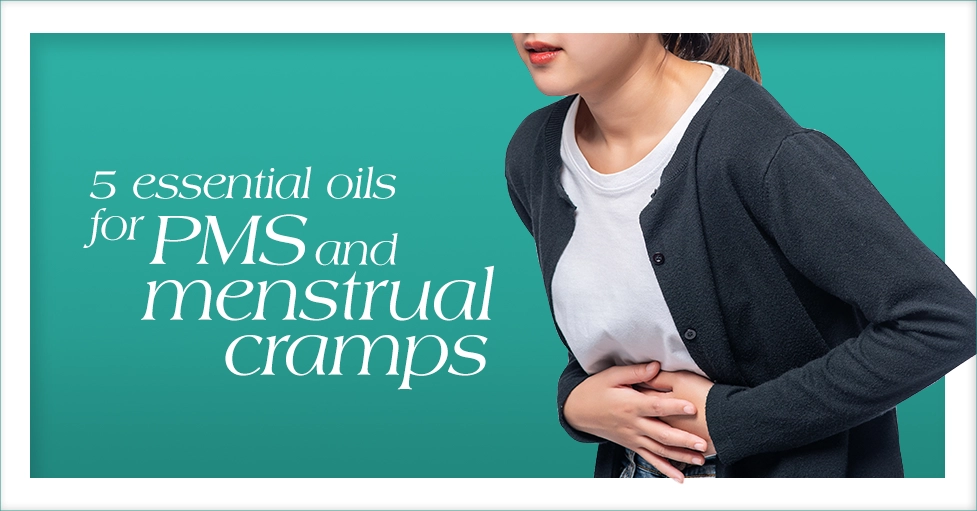

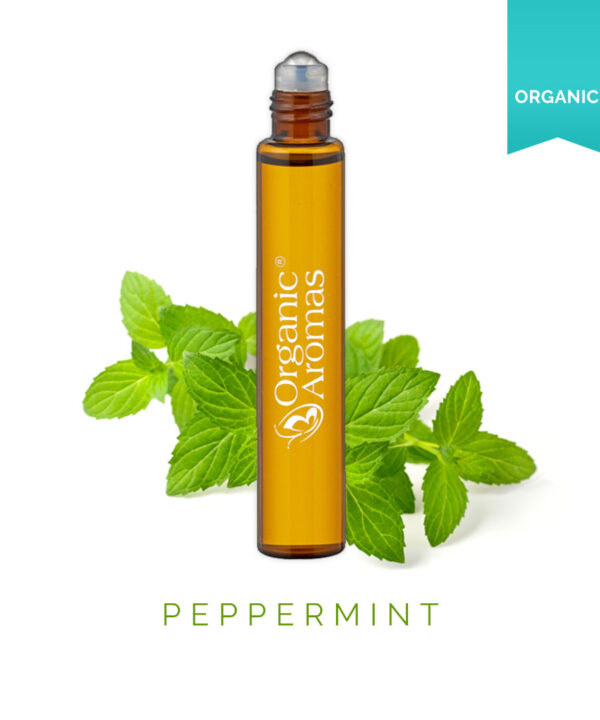
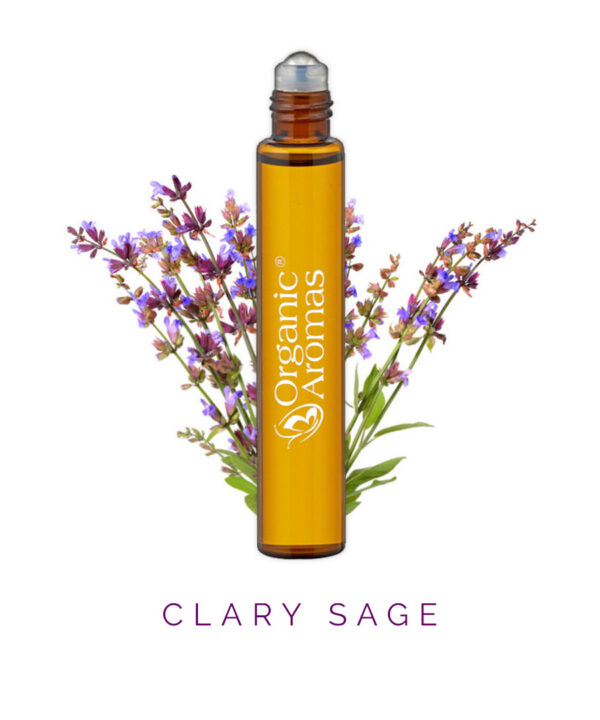
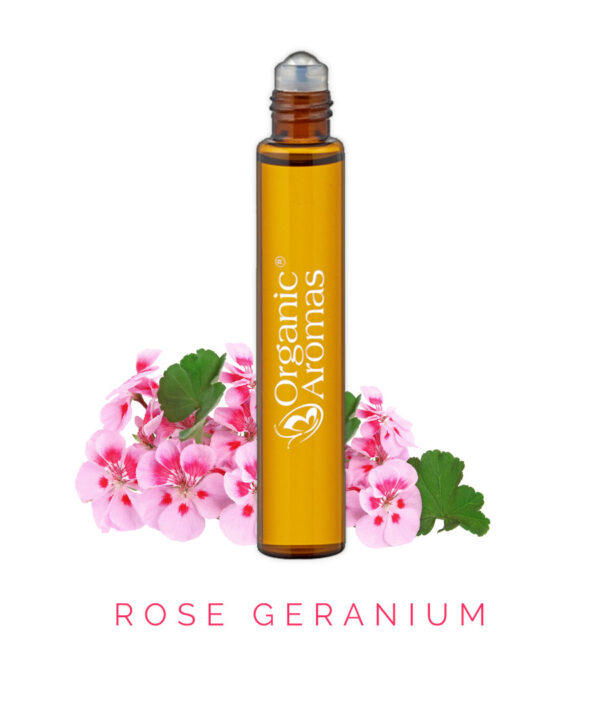
I was suffering from some nasty cramps and rubbed lavender and peppermint EO on my abdomen and was astonished at how effective and quickly they worked. Better than any OTC, by far.
My daughter just started her noontime tonight
Are these oils to be used individually or mix all 5 together?
I had a severe tooth ache several months ago & was stunned that it actually helped when I put a little bit onto my cheek bone and behind my ears
I’ve been suffering all morning (3 hours) from severe PMS bloat. Was in such extreme pain. I decided to use my diffuser since I was down in the dumps and dropped in some Lavendar and Ylang. By accident I spilled the Ylang Ylang, so I rubbed the remaining amount on my abdomen plus a little lavendar and low and behold, my bloat dissapeared! I was dumbfounded so I went online and found this article and was completely blown away.It’s almost like voodoo. So weird.
I am trying this right now. I have a spell that would go great! Can’t wait for this to work!
I’m glad I don’t do this any more. Wish I’d know about EOs when I did.
Alot of great information for women who have this problem. I am lucky I never had any cramps or problems.
Great article…Will definitely try these suggestions next month
I definitely have to show this to my wife as she gets hit extra hard every month, Thanks for the tips!
Love that you mentioned sugar and processed foods as culprits in exacerbating PMS symptoms. I typically avoid gluten and processed food, but notice a big difference in pain levels when I’ve been eating gluten in particular!
Since excess estrogen in the body contributes to difficult periods, Clary Sage is also great for PMS! Just saw that your Signature Blend has both Clary Sage and Chamomile together.
I wish I knew this when I was younger! I do have daughters tho, so I will be passing this along to try
I don’t suffer from PMS now but I use to when I was younger. So glad to know how I could have dealt with it back then. This information is so necessary for women to know who suffer with PMS. Love this blog!
Thank you for this great post. I think it’s something that would be very helpful for my daughter.
Clary Sage is also wonderful in helping to ease symptoms and regulate hormonal imbalances. Thanks for the opportunity to win!
It’s good to know.
I’m learning something new each day about essential oils. I never knew they were used for anything except scents in a Nebulizer and perfumes. Helping moods is great but helping PMS? Where were you when I needed you? HAHA! I’m menopausal now. Dang it.
Thank you so much for this wonderful post. I can’t wait to try them out.